Everyone Good evening. I know you defended that topic so to speak “Shit”, but I think you’ll like this one.
Not everyone can answer what “special forces” is.
On this moment in Russia there are a huge number of organizations and divisions of various departments - from the tax service to the Ministry of Emergency Situations - that exist under the name “special forces”. This is often the reason that the original meaning of the term “special forces”, which arose in the Main Intelligence Directorate, has been greatly distorted. We believe that for a better understanding, all “special forces” should be roughly divided into three groups:
. Special units directly involved in reconnaissance, sabotage, deployment of the partisan movement on enemy territory, as well as fighting partisans on their own. This group includes, first of all, the army and navy special forces, the stronghold of all “special forces” that exist to this day.
. Special units of structures state security, as well as police special forces created to combat terrorism and organized crime.
. The last group includes all the rest of those who were created without a clear definition of their tasks and functions. These are, for example, special forces of the internal troops and the Ministry of Justice, the Special Forces Directorate under the Presidential Security Service, etc.
The idea of creating a GRU unit capable of carrying out special tasks, is not new and was tested back in the USSR. Such units have always included only the best, well-trained fighters who know their job.
After the collapse Soviet Union 5 land and 1 naval brigades went to the breakaway republics. Three more were disbanded. Thus, Russia has only four brigades left.
The most famous of the units remaining in the “near abroad” is the 5th GRU special forces brigade, stationed near Minsk in the village of Maryina Gorka. It was this unit, according to experts, that was the most famous special forces brigade of the USSR GRU, occupying first place among all special forces units.
Now the illustrious formation consists of units belonging to different departments of the Ministry of Defense, Internal Affairs, and the State Security Committee. Today, only 20-30 old-school special forces remain in the brigade. The rest came from other branches of the military.
Of the 4 special forces brigades remaining in Russia, two were transferred from the GRU to the Airborne Forces in 1994. And currently the GRU has two 16th brigades stationed in Chuchkovo, Ryazan Oblast, and the 22nd, stationed in Kubinka, Moscow region.
The 22nd Brigade, nicknamed the "Gray Wolves", now consists of four companies, three of which specialize respectively in the western, southern and southwestern theaters of operations. Their personnel study the necessary languages, geography and combat tactics in appropriate conditions: in mountains, forests, deserts, etc. The fourth company is intended to perform special tasks. The only thing that is reliably known about this company is that its personnel consists of warrant officers and officers.
A very decent base has been created in Kubinka both for the accommodation of employees and their families, and for training of personnel. This location was previously occupied by The educational center Military Humanitarian Academy, and this greatly contributed to the rapid development. The brigade's training base has a shooting range, a tank station and a nearby airfield.
In addition to traditional AKMs and PMs, the brigade personnel are armed with silent machine guns, pistols and sniper carbines designed for the 9-mm cartridge, Bumblebee volumetric explosion installations, directional mines and radio mines, automatic grenade launcher"Flame". Radio operators have a special radio designed for GRU units. Its range is up to 3 thousand kilometers, weight is 12 kilograms. The radiogram is delivered to the center almost instantly, so it is very difficult to determine the operation of such a transmitter.
The most widely known and honored glory among special forces are the so-called Directorates “A” and “B”.
Directorate “A” is a division of the KGB-FSB, whose task is to fight terrorism (better known as Group “Alpha”). Group “A” was created on July 29, 1974 by order of Yu.V. Andropov and numbered 30 people. Such military operations of the group are known as the capture of the well-fortified Amin Palace in Afghanistan on December 27, 1979. Then the fighters acted together with the Zenit group, as well as with the support of paratroopers and fighters of the “Muslim battalion”. During the operation, Group A lost two of its soldiers. On August 19, 1991, Team A refused to participate in the storming of the White House, thereby preventing the death of thousands of people and possible start civil war.
Since its creation, the unit has undergone several generations, continuing the fighting traditions of Alpha. Since the second half of the 90s. Group “A” is actively involved in counter-terrorism operations in the North Caucasus.
During the capture of Movsar Barayev’s gang on October 26, 2002, “Nord-Ost”, Directorate “A” and Directorate “B” of the TsSN FSB of the Russian Federation freed the hostages, and all the terrorists were destroyed. In September 2004, group “A” held a special. operation to free hostages in a Beslan school.
Group “A” throughout the history of its existence was subordinate to various departments. So, for example, from the moment of its creation until 1991, it was in the structure of the 7th Directorate of the KGB under the Council of Ministers of the USSR, in August 1991 it was transferred to the Security Directorate under the Office of the President of the USSR, and in November 1991 it became part of structure of the Main Security Directorate of Russia (GUO). In the status of Directorate “A”, since 1995 it was part of the Anti-Terrorism Center of the FSB of the Russian Federation, and from 1997 to 1998. Department for the Protection of the Constitutional Order and Combating Terrorism of the FSB of the Russian Federation. Since 1998, Directorate “A” has been part of the Special Purpose Center of the FSB of the Russian Federation.
Directorate “B” was created in 1981 under the auspices of the KGB as a secret special forces detachment with the aim of conducting operations outside the country in “ special period" During this period, there was a cold war between the West and the Soviet bloc, regional conflicts. It was necessary to have a unit on hand, ready, if necessary, to begin active operations behind the rear of a potential enemy. Orders to conduct special operations could only be given by the KGB chairman and only in writing.
Personnel for the formation of the new unit were recruited not only from the KGB, but also from airborne troops, border guards, pilots, sailors and tank crews. Candidates were subject to very strict requirements regarding health, psychological qualities and knowledge of foreign languages. 90% of the old Vympel staff knew foreign languages, many had 2-3 higher education. Distinctive feature Vympel employee - the ability to work alone, in isolation from the main group.
The forerunner of Vympel is considered to be Zenit, one of two assault groups, which in December 1979 worked together with Alpha (code name “Thunder”) at Amin’s palace. In case of war, a brigade operated as part of the First Main Directorate of the KGB of the USSR (intelligence) special purpose. Although its staff was only on paper, special. reservists periodically gathered at Officer Improvement Courses (COOC), and then went to their duty stations. From them Zenit was formed, and then Vympel. The KUOS teachers were: bright personalities, like, for example, Ilya Grigorievich Starinov - the saboteur of the century, a man of rare and amazing destiny, as well as his students and associates: G.I. Boyarinov, B.A. Pleshkunov, P.I. Nishchev, S.A. Golov and others.
The first commander of the USSR KGB Special Forces Group “Vympel” was Captain 1st Rank Evald Kozlov, who was awarded the Hero Star for his participation in the storming of Amin’s palace. According to all documents, the unit was designated as a Separate Training Center of the KGB of the USSR.
The squad's fighters had excellent combat training, and they themselves knew very well that it often surpasses the American one in its intensity, sharpness and effectiveness. And this is not surprising, because the main “training ground” in those years was Afghanistan.
In the 80s, two KGB operational combat detachments “Cascade” and “Omega” operated in Afghanistan. Since the beginning of 1982, “Cascade” was staffed by full-time employees of the “Vympel” group, most of whom were participants in the first years of the Afghan war. About a thousand people entered the Cascade special forces unit, its first detachment, which was headed by Colonel, and later Major General Alexander Lazarenko, a true master of unique special operations and solving complex tactical reconnaissance problems. The stuntmen have carried out many combat operations, reconnaissance and sabotage actions. The main tasks of the “Cascade” included conducting intelligence and operational work, special measures against gangs and the most aggressive enemies of the Afghan regime and the USSR. Subsequently, by decision of Moscow, “Cascade” was transferred to the operational subordination of the special forces detachment of the Ministry of Internal Affairs “Cobalt” (600 employees), whose work had its own specifics. The detachment had dual subordination: to the Moscow Center, and in Afghanistan itself to the KGB representative office.
Omega's tasks included working with advisers attached to special units of the Ministry of Security (KhAD). The detachment was divided into nine task forces. Eight of them were located in the provinces, and the headquarters and capture group lived on the territory of the KGB representative office in Kabul. Omega headquarters officers compiled a card index for almost all opposition units. This data (it was constantly updated) included details, up to the installation data on field commanders, their party affiliation, number of fighters, weapons and availability of ammunition. The “stuntmen” from “Omega” have completed 12 large-scale military and more than 300 local operational military operations; intelligence data for carrying out 1,500 airstrikes on the locations of gangs; a series of special measures to eliminate the most irreconcilable bandit leaders. Officers with knowledge of local languages were engaged in the disintegration of the gang movement in Afghanistan. In total, five Cascade special forces operated in Afghanistan from July 1980 to April 1984: Cascade-1 (6 months), Cascade-2 (6 months), Cascade-3 (9 months), "Cascade-4" (1 year), "Omega" (1 year). The commander of the first three “Cascades” was Lazarenko, “Cascade-4” was headed by Evgeny Savintsev, “Omega” was led by Valentin Kikot. All three - former employees special department foreign intelligence KGB.
After Afghanistan, the officers of the Cascades and Omega returned with such a baggage of irreplaceable knowledge and skills that they could be teachers, and the former rebels of Angola and Mozambique who came to power, as well as the Sandinistas in Nicaragua, were already waiting for them. They were sent to these hot spots as advisers and instructors in order to pass on their experience at the forefront of the fight against American imperialism, and at the same time gain new ones.
The experience gained was used by Vympel fighters for sabotage on the territory of the Soviet Union. The first exercise, codenamed Neman, was held in 1983. During the exercises, a large group of reconnaissance saboteurs was sent to Belarus and managed to disable the large railway junction of Kalinkovichi. In 1985, exercises began, during which they tested how the KGB and the Ministry of Internal Affairs of the Magadan Region and Chukotka would react Autonomous Okrug for the infiltration of saboteurs from Alaska. Vympel worked at the Chita Thermal Power Plant and the Leningrad Nuclear Power Plant, identifying gaps in the security regime of these strategically important facilities. When conducting the exercises, the leaders of the KGB special forces did not act on a whim. They knew the list of targets identified by the enemy on Soviet territory and learned to counter it.
As part of the formation, units of combat swimmers, mountain riflemen, paratroopers, and ultralight aviation pilots took shape and gained practical experience. The combat and technical equipment of the Vympel became more advanced and adapted for solving special tasks from year to year. Much of this is due to the head of the operational combat department, Colonel V.M. Vasilchenko and Colonel A.M. Makukhin, who replaced him.
Over the years of its existence, the division has become one of the most powerful in the world. It was in constant combat readiness, reconnaissance saboteurs could fight from the air using their special equipment, land in groups over a large area and take control of the enemy’s economic and military activities, while remaining undetected. They could leave the submarine unnoticed neutral waters, get to the shore, penetrate from sea to land, go through the entire country and go to a given area to reconnaissance and capture an important object, and then, having completed your task, go back to sea. The unit gradually found its feet and confirmed its need for the country.
But during the years of Gorbachev’s perestroika, the problem of worthy use of the Vympel group arose, for a long time occupying the minds of the KGB leadership, since keeping an elite special forces unit idle had become too expensive a pleasure at a time when the country was especially in need of resources. Events in Azerbaijan, Georgia and other republics of the Union pushed the KGB leadership to make a decision to use Vympel within the country. Since 1989, members of the unit regularly traveled to various hot spots.
On August 19, 1991, Vympel was preparing to celebrate its tenth anniversary. However, the gathering for the anniversary took place not according to the festive protocol, but according to a combat alert. Few people then understood what happened. Knew only fragmentary information from the means mass media. On August 19, in combat gear and with complete confusion in their heads, the detachment went to the city center to Lubyanka. Fortunately, the situation began to clear up. The putsch did not take place. After serving two days in combat readiness, the soldiers returned to the unit's location. After the defeat of the Emergency Committee new chairman KGB Vadim Bakatin changed the entire leadership of the group. With the resignation of Leonid Shebarshin as head of intelligence, Vympel seemed to hang in the air. The native department abandoned special forces " cold war", allegedly tainted himself dirty deeds. Evgeny Primakov, new manager intelligence, announced the changed goals and methods of this department. That's why elite special forces transferred to the Inter-Republican Security Service (a structure created in place of the allied KGB). The next owner of the unique unit was the Agency federal security(AFB), created on the basis of the KGB of the Russian Federation.
On January 24, 1992, President Yeltsin issued a decree on the creation of the Ministry of Security, which included Vympel. Ultimately, the detachment ended up in the Main Security Directorate (GUO), where they had already managed to transfer “Alpha”. Along with the profile of the unit, the nature of training also changed. The main task was to protect strategic and environmentally hazardous facilities from terrorists and saboteurs. The tasks also included the fight against drug trafficking and armed criminal gangs mafia.
During exercises in the summer of 1992 in Murmansk, Vympel fighters stormed the nuclear icebreaker Sibir. On board there were intermediaries who closely monitored the situation around the ship, because the exercises were carried out in daytime. However, the “terrorists” did not notice how divers emerged from the water, climbed onto the deck with the help of special devices and instantly “removed” the external security. The job was completed by the paratroopers, who jumped at a wind speed of 15 meters per second.
During the October events of 1993, Vympel, together with Alpha, received the task of storming The White house. Both elite units refused to act as punishers own people. Even President Yeltsin, who assembled officers just a few hours before the operation began, could not convince them. When at around ten in the morning the Vympel and Alpha units moved out of the Kremlin towards the White House, the head of the Main Security Directorate (GUO), General Mikhail Barsukov, drove up to them and began to convince them that special forces were simply obliged to go to the White House, where they were dying random people, young inexperienced soldiers, and prevent more great tragedy. If they refused, he threatened to disband the units. Both groups had no choice but to go to the battlefield, but they did not change their decision not to shoot at either side. When information appeared that the leadership of the White House would not be allowed to leave the building alive, the commanders of Vympel and Alpha decided to send their units to the besieged White House and, under their cover, take people out to save them from reprisals.
Vympel was not forgiven for such behavior. And if “Alpha” was ultimately saved, then President Yeltsin decided to destroy “Vympel” and on December 23, 1993, handed it over to the Ministry of Internal Affairs. 112 officers of the legendary unit immediately submitted their resignations (a similar reaction from officers, masters top class, it was not difficult to predict), and only 50 decided to wear police shoulder straps. Those who stayed on public service, sought to preserve, if possible, the traditions and fighting spirit of Vympel. The new name is the “Vega” detachment of the Russian Ministry of Internal Affairs.
Having learned about the liquidation of Vympel, representatives of the largest private security agency in the United States immediately flew to Moscow and offered jobs to the fighters of the former unit. The Americans have always admired and, one might even say, envied the level of training of our special forces soldiers and, at every opportunity, tried to lure them to their side, but they rarely succeeded. The Vympelovites naturally refused, deciding that they could find use for themselves in their homeland. Thus, about 150 people went to serve in the Main Security Directorate, the Foreign Intelligence Service, the FSK and the Ministry of Emergency Situations. Many officers received pension documents and went to work in the private security services market.
When did the second one start? Chechen War, “Vega” has been “at home” for several years - as Directorate “B” of the FSB Special Purpose Center. Her track record includes dozens of successfully carried out operations in Dagestan and Chechnya, as well as an incredibly complex operation carried out jointly with Alpha fighters in the Theater complex on Dubrovka. The new generation of fighters with honor holds the “Vympel”, raised back in 1981 by special operations aces. The combat experience gained in the North Caucasus makes the special forces of the TsSN FSB one of the best units in the world.
Type “A” units exist in many CIS republics. But only three of them are truly descendants of “Alpha” - Group “A” of the KGB of the Republic of Belarus, Directorate “A” of the Security Service of Ukraine and the “Arystan” Service of the Kazakh KNB. In addition, in some regions of the Russian Federation there are regional special forces of the FSB, which the common man invariably associates with Alpha.
The scale of the country physically did not allow Alpha and Vympel to cope with the danger throughout Russia, quickly finding themselves at the scene of another emergency. Therefore, a decision was made to expand: in addition to the three groups in Khabarovsk, Yekaterinburg and Krasnodar, new regional special operations departments (ROSO) were added in St. Petersburg, Vladivostok, Voronezh, Irkutsk, Krasnoyarsk, Murmansk, Nizhny Novgorod, Novosibirsk, etc. There were 12 of them in total. They were tasked with combating terrorism, freeing hostages, and providing force support for counterintelligence operations of the FSB.
The Murmansk ROSO, also known as the “Kasatka” detachment (according to the department’s emblem), was also supposed to operate on the territory of the Komi Republic, Arkhangelsk region and Nenets Autonomous Okrug. In addition to its own, the Novosibirsk ROSO controlled three more regions: Omsk, Tomsk and Kemerovo, as well as the Altai Republic and the Altai Territory.
The Grad division is one of the oldest and dates back to August 12, 1993, when a non-staff structure was created by order of the head of the St. Petersburg Department of Internal Affairs, Viktor Cherkesov. It was then that the name “Grad” was born, which means “group active actions" When a regional division of the ATC FSB appeared in St. Petersburg in 1997, it was decided to combine these two specialized structures into a single fighting fist. The "Grad" itself was created on the basis of another special forces of the non-standard group "Baltika", formed in the late 80s under the KGB for Leningrad and the Leningrad region.
Currently, there are three Regional Special Purpose Services (RSSN): in St. Petersburg, Khabarovsk and Kuban. Also in some regions, Regional Special Purpose Departments are on combat duty. At the FSB of the constituent entities of the Russian Federation there are departments for supporting operational activities (OSOM), a kind of small “Alphas”.
Separate special forces companies formed within the structure of the USSR Ministry of Defense in 1950 later grew into separate battalions and special forces brigades. They were entrusted with reconnaissance and sabotage tasks and organizing the partisan movement behind enemy lines, but the “heyday” of army special forces was Afghan war. Acting suddenly, decisively and boldly, relatively small reconnaissance groups and special forces detachments inflicted significant damage on the enemy in manpower and weapons.
In 1956, Minister of Defense G.K. Zhukov issued an order to organize a special navy. On the basis of this order, detachments were created to combat underwater sabotage forces and means (PDSS detachments) in all fleets: the Baltic, Black Sea, Pacific, Northern). Currently, there are reconnaissance and sabotage centers that train personnel for various detachments, such as Vympel, Dolphin (GRU), Killer whales (FSB).
The Killer Whale squad is the most closed unit of the Russian special services in the Murmansk region. Their leader is State Security Lieutenant Colonel Sergei Shishin. For about two years he has headed the northwestern regional department of the Anti-Terrorism Center (ATC) of the Federal Security Service of the Russian Federation, which is known in the ATC under the name “Kasatki”. There were more than enough reasons for the creation of such a unit in 1994, since there were a large number of objects that could become bait for terrorists: nuclear reactors, nuclear warheads for missiles and torpedoes and other weapons, and everything else, the border is very close. On July 5, 1994, the Special Operations Directorate was created in the bowels of the then FSK, and the creation of its departments began in the regions. In December 1994, Murmansk “Killer whales” appeared, which were subordinated directly to the head of the ATC of the FSB of Russia. The tasks of "Killer Whales" include conducting special operations to combat terrorism and extremism in Russia and abroad, as well as suppressing terrorist acts at defense complex facilities located nuclear weapons, and at nuclear power plants.
Since “Kasatkas” control the territory of the North-Western region of the country, they mainly interact with the departments of the FSB and the Ministry of Internal Affairs of the constituent entities of the federation of this region, military counterintelligence of the Northern Fleet, the Leningrad Military District, the Arctic Group of Border Troops, Northwestern district internal troops of the Ministry of Internal Affairs.
Solving such tasks to protect such a vast territory requires the presence of multidisciplinary employees in the unit. The Killer Whale actually has both ground units and combat swimmer units. Combat swimmers are provided with French wet suits, which are used by members of Jean Cousteau's traveling team. They are worn on naked body, and when immersed, water fills the porous fabric of the suit and serves as a kind of heat insulator. They also have regular type waterproof suits. On top of the wetsuit, fighters wear special vests, the pockets of which contain knives, underwater weapons, first aid kits and much more. The Killer Whales are armed with the most modern superweapons, including foreign production, which previously could only be dreamed of. There is also one whose shots cannot be heard or even seen. The squad also includes skiers and climbers, provided with the most modern equipment and satellite communications.
Only officers serve in the Killer Whale, average age who are 27 years old, and their physical shape is always at the highest level. They are simultaneously parachutists, climbers, and divers. It is no coincidence that the department received the proud name “Kasatki”. Almost all employees have one or two higher educations, some of them graduated from the FSB Academy or are studying there by correspondence. The department's employees have operational, including intelligence training.
Special operations carried out by the department are not subject to disclosure, but it is known that over the past year and a half, the Murmansk "Kasatkas" have carried out many operations outside the Murmansk region to prevent acts of terrorism and capture armed groups, the longest of which lasted only 5 seconds: from the assault command until it is completed.
Currently, special forces are provided with everything necessary to carry out their difficult tasks. In addition to the special equipment and weapons that are provided to military saboteurs and combat swimmers of anti-sabotage services, the anti-terrorist departments of the FSB are equipped with special space communications equipment, silent weapon, including weapons with special cartridges that, when fired, do not detect the shooter with a flash, smoke, or sound. The operation of these cartridges is based on the principle of pushing a bullet out with a special steel rod. The usual gunpowder in the cartridge is replaced with a special chemical mixture; upon ignition, a gas is formed that acts on the rod, and through it on the bullet. At the same time, the cap of the rod, reaching the edge of the sleeve, closes the exit from it to flame and gas.
The reconnaissance and sabotage formation "Dolphin" was created in 1970 under the auspices of the Chief intelligence agency General Staff (GRU) for the purpose of conducting covert operations against naval bases foreign countries. Everything was developed by Soviet military specialists almost from scratch, from equipment and technical means to training methods and tactics of underwater operations. But, despite this, over the course of several years we managed not only to catch up with similar naval units of the USA, England, France, Germany, and Italy in all areas related to underwater reconnaissance and sabotage, but also to overtake them.
PDSS detachments recruit fighters into their ranks mainly from among volunteer marines who have received a recommendation from their commanders. The candidate must withstand great physical exercise, it is good to tolerate diving to significant depths and pressure changes. Basic training of cadets lasts six months and is divided into 3 stages. At the first stage, cadets run long-distance cross-country races, swim, row, and overcome an obstacle course, and every day the loads increase and the requirements become more stringent. At the end of the first stage (at last week) the cadets’ ability to withstand extreme physical and psychological stress is tested. At this time, about 3-4 hours a day are allotted for sleep, forced marches with full gear are carried out for 100 kilometers and a swim in a wetsuit for 18.5 km, not lightly, but towing a load weighing up to 40 kg. On average, only one out of 15-20 cadets completes this stage. During the second stage, we study diving equipment, mine explosives, tactics of combat operations of small groups in water and on land, the basics of military reconnaissance, radio science, mastery of cold steel and firearms: serial and special. Then parachute training, rock climbing, control of underwater, surface and ground vehicles are taught. vehicles. Of course, a special place is occupied by studying and practicing various actions under water, methods of penetration from under water into given point and evacuation from shore to water. Much attention is paid to hand-to-hand combat, both on land and under water with a knife: regular and needle. Techniques of shock, traumatic and fatal effects on the enemy are carefully practiced. At the end of the second stage of training, cadets take an exam on the protection and defense of coastal facilities and ships from enemy swimmers and saboteurs. The exam takes place in the form of exercises structured as a model of a combat operation. Those who successfully pass the test are sent to a separate brigade Marine Corps to consolidate acquired skills.
During training, a lot of time is spent on improving shooting skills from various models. firearms domestic and foreign production, many of which have no analogues in the world, for example, the APS-55 automatic rifle for underwater and surface firing, its length is only 62 cm, weight with a magazine for 26 rounds is 2.7 kg. It is capable of hitting a target at a distance of up to 10 meters at a depth of 40 meters, penetrating the hull of a miniature submarine, the bottom of a boat, etc. In the air it kills at a distance of up to 100 meters.
The main thing is how the Dolphin swimmers surpassed their own foreign colleagues, this is the ability to overcome any lines of underwater defense and pass where at first glance it is absolutely impossible to pass.
The total number of frog people (special combat swimmers) serving in the central and territorial divisions of the Ministry of Defense and the General Staff, the Ministry of Internal Affairs, the FSB, the Foreign Intelligence Service, Federal service security, FAPSI, the Ministry of Foreign Affairs, the Ministry of Emergency Situations and the Ministry of Justice, is approaching, according to some estimates, 2 thousand people.
In the minds of the masses, the concept of special forces is primarily associated with riot police or SOBR, while the name “Lynx” is heard less often, although this detachment is older than its brothers. It was created under the regional department of execution of punishments of the Ministry of Internal Affairs of Russia in July 1991. “Lynx” is a proper name, and in each region these units are called differently: “Tiger”, “Falcon”, “Rossy”, etc. Unlike the riot police, “Lynx” is not a city dweller, but is more familiar to it wild environment habitat: tundra, hills, which is associated with the main function of the detachment suppression riots in places of deprivation of liberty, capture of escaped prisoners. They get into the squad for the most part"by acquaintance" is additional opportunity to avoid random people. But the main pass to the squad physical training and fighting character. The selection is very tough: on average, out of ten applicants, one passes. Full equipment weighs 35 kg. Considering that they don’t take a bulletproof vest for an operation, you can’t really run around with it. The upper age is not limited here to a man as old as he feels. Almost the entire squad, with the exception of the newcomers, visited Chechnya, and more than once.
The skills possessed by the unit's fighters allow them to perform a variety of tasks related to law enforcement. The “Lynx” knife was developed especially for the “Lynx” division of NOKS, which was initially produced in A&R. The squad's snipers are today considered perhaps the most trained specialists in this profile in the world. For recent years they win almost all shooting competitions, including international ones. To prepare good sniper As they say in the squad, it takes 4-5 years. Therefore, each of them is worth its weight in gold. In addition to snipers, the squad has other unique specialists: divers, demolitions, negotiators. For example, few people know that combat swimmers of the Lynx detachment ensured the safety of high-ranking guests during the celebration of the 300th anniversary of St. Petersburg and were then presented with state awards.
"Lynx" is not intended to fight underwater saboteurs and terrorists, but despite this, diving and parachute training are included in the combat training system of the "Lynx" detachment and related special forces. squads.
The training of a OMSN “Lynx” employee also includes proficiency in different types firearms and bladed weapons, skills hand-to-hand combat, mountain training: mountaineering, rock climbing. It is also important psychological preparation, which implies the ability to make the right decision in an extreme situation and navigate a rapidly changing environment.
Within the structure of the Ministry of Internal Affairs special units(OGPU, NKVD) existed almost from the moment of their creation Soviet power. Currently, the structure of the internal troops also includes special forces units, of which there are about sixteen. These are such units as “Vityaz”, “Rus”, “Rosich”, “Skif”, etc.
The special purpose detachment “Vityaz” arose in 1991 on the basis of a special company, assembled to solve special problems quite spontaneously and as an experiment.
Special detachments and units are simply irreplaceable in armed conflicts of our time, as the desire to warring parties not to the physical destruction of the enemy, but to undermine his military power from within. And the main role in this is given to special forces. History already knows many facts when the use of special forces troops, both before and during hostilities, contributed to successful implementation the operation itself and the end of the conflict as a whole.
Now “Vityaz” is no longer the only one in the troops of the Ministry of Internal Affairs. Sixteen special forces units, almost each of which has its own original name, carry out combat missions in their regions: 1PSN VV “Vityaz”, Moscow; 7 OSN VV "Rosich", Novocherkassk; 8 OSN VV "Rus", Moscow; 12 OSN VV "Warrior", Nizhny Tagil; 15 OSN VV "Vyatich", Armavir; 16 OSN VV "Skif", Rostov; 17 OSN VV, Mineral water; 19 OSN VV "Ermak", Novosibirsk; 20 OSN VV, Saratov; 21 OSN VV "Typhoon", Khabarovsk; 23 OSN VV "Mechel", Chelyabinsk; 24 OSN VV "Svyatogor", Vladivostok; 25 OSN VV "Mercury", Smolensk; 26 OSN VV, Kazan; 27 OSN VV, Kemerovo; 28 OSN VV, Arkhangelsk. More than ten thousand soldiers and commanders serve in these units, but the Vityaz special forces detachment is rightfully considered one of the best units Internal troops Ministry of Internal Affairs of Russia.
In the world of military forces, nothing captures the imagination more than special forces. In addition to the conventional armed forces, most countries have an elite group of troops corresponding to more high standard requirements and training. Some of these groups have received wide publicity, others are not so well known and are shrouded in myth. A commando can silently emerge from the water to quietly neutralize guards, storm an airplane to rescue hostages in a captured mall, sabotage enemy bridges and roads, and carry out other most secret missions in the military world.Which countries best special forces peace? This is a difficult and almost unanswerable question, since any national special forces are created for serious missions, from counter-terrorism and hostage rescue, to reconnaissance and even attack. However, past operations and reputation can be taken into account to assess which forces are in the lead.
Special forces GIGN, France
Let's start with the French Gendarmerie Intervention Group (abbreviated GIGN) from France. GIGN, like most European special forces units, traces its history to the hostage crisis on Olympic Games Ah 1972 in Munich. In France, a year earlier, there had been a prison riot during which hostages were taken and killed.The result of these upheavals led to the creation of a force that today includes approximately 400 fighters. Specializing in hostage rescue and counter-terrorism, GIGN has repeatedly demonstrated itself in action. Past operations have included the rescue of 30 schoolchildren hostages in Djibouti, the capture of war criminals in Bosnia, the fight against Somali pirates and, of course, the dramatic attack and rescue of Air France Flight 8969 in Marseille in 1994. 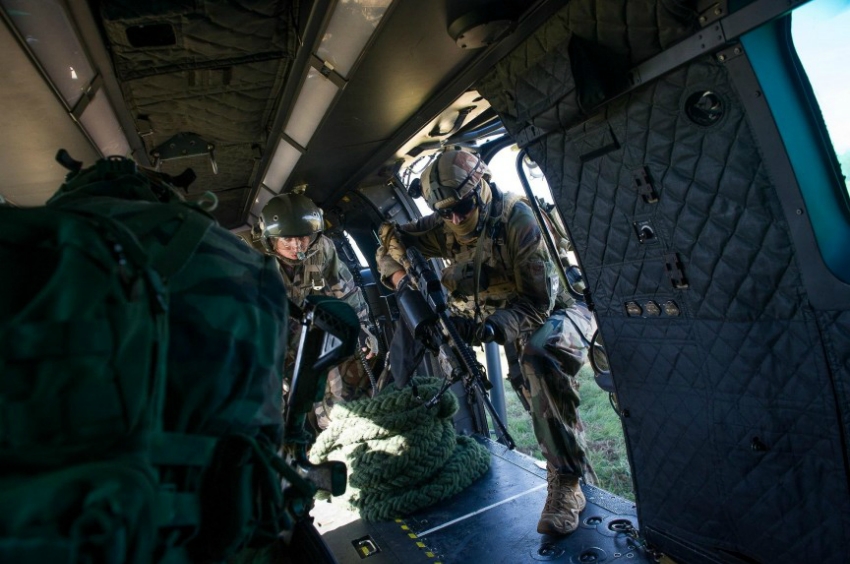
SSG Group, Pakistan
In 1956, the Pakistan Army created its own special forces, known as the Special Services Group (SSG). This force was modeled on the British SAS and American special forces, and its numbers remain secret. Selection for the special forces ranks is very strict, and only 1 out of 4 newcomers after nine months of training, airborne school, hand-to-hand combat courses and grueling physical exercise fall into the ranks of the SSG. The SSG is trained to perform missions in all sorts of environments, including mountains, desert, jungle and even underwater combat.During the early Cold War, SSG forces trained and operated alongside American special forces. Some fighters trained in Afghanistan, fighting with the mujahideen against the Soviets in the 1980s. India claims that SSG forces have frequently attacked its soldiers in the border areas between the two countries. Later, the SSG focused on local counter-terrorism operations, taking part in many successful operations. 
Sayeret Matkal, Israel
This Israeli special forces branch focuses on intelligence, anti-terrorism and hostage rescue outside of Israel. Sayeret Matkal was created in 1957 to fill a void in the Israeli Special Forces and is composed of candidates selected for high physical and intellectual characteristics. Candidates undergo eighteen months of training, including basic infantry school, parachute school, counter-terrorism training, and reconnaissance.The force has taken part in many large-scale operations since the 1960s. The most famous of them is Operation Entebbe/Thunderbolt, which made Sayeret Matkal famous throughout the world. The operation began after several Palestinian terrorists took hostages on board an airliner. Many hostages were released, but more than 100 people (mostly Israeli and Jewish hostages) were detained in the airport terminal building. A group of approximately 100 Israeli commandos, including Sayeret Matkal special forces, attacked the position, killing the terrorists and freeing all the hostages. 
EKO-Cobra, Austrian special forces
In 1972, as a result of the attack on Israeli athletes during the Munich Olympics, Austria created the Cobra-Einsatzkommando for anti-terrorist operations. The unit was created from 450 men who served in the Austrian Federal Police. EKO-Cobra training is similar to other squads and includes several months of specialized courses in marksmanship, languages, hand-to-hand combat and tactical combat training.All candidates undergo psychological and physical testing. During training, Special Forces soldiers learn explosives, scuba diving and sniping. While EKO-Cobra has not had the same outstanding operations as Sayeret Matkal, they successfully freed hostages in Graz Prison in 1996, and are the only counter-terrorism team to prevent a mid-flight hijacking. In this case, in 1996, four Cobra fighters were on a flight when a hijacker called for the plane to divert. Needless to say, the hijacker chose the worst flight for such a step, and was immediately neutralized by special forces. 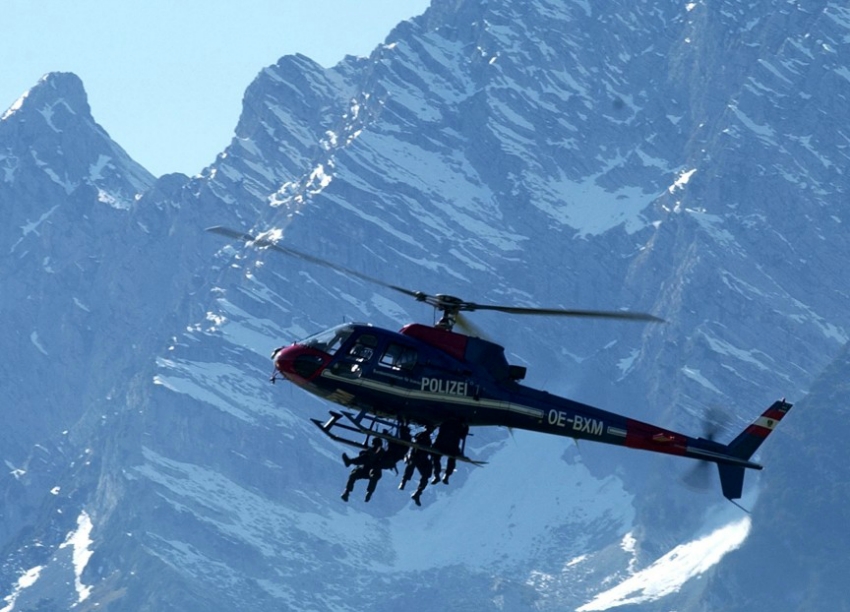
Delta Force, USA
The full name of this group is the 1st Special Forces Operational Detachment "Delta". In addition to counter-terrorism operations, Delta may also take part in hostage rescue, attacks, reconnaissance and less. covert operations by direct influence. The group was formed in 1977 as a result of a growing number of terrorist operations. It was created mainly from soldiers who served in the American special forces, Green Berets, or Rangers.Potential candidates must be male, 21 years of age or older, have high test scores, and be well prepared physically and mentally. A series of grueling physical and mental tests eliminate the weakest ones right away. Based on the test results, less than 1 out of 10 applicants are admitted to intensive 6-month training courses. Delta Force operations are shrouded in secrecy, but you can be sure that they are at the forefront of any US operation. 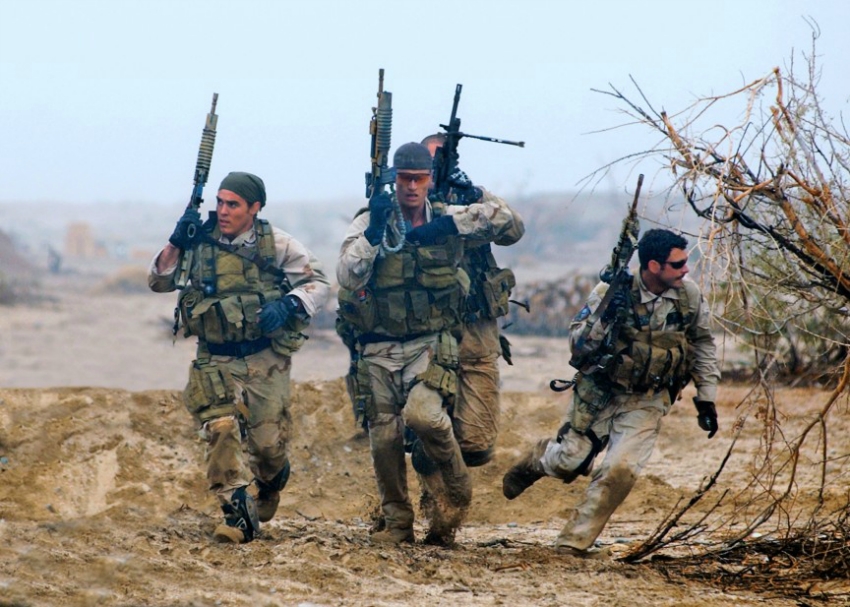
Special Forces JTF2, Canada
Created in 1993 and expanded to several hundred troops following the terrorist attacks of September 11, 2001, Canada's JTF2 is an elite counter-terrorism and special operations force. Composed of members of the Canadian Armed Forces, JTF2 carries out a wide range of operations. They have repeatedly escorted VIPs and provided security at events such as the 2010 Winter Olympics.More secretly, they worked in many of the world's hot spots, rescuing hostages in Iraq, or tracking down Serbian snipers in Bosnia. Their presence in Afghanistan is largely classified, but it is known that some forces were still involved in individual operations. Their activities were so secret that even the Canadian Prime Minister was unaware that JTF2 was deployed to Afghanistan during the early years. 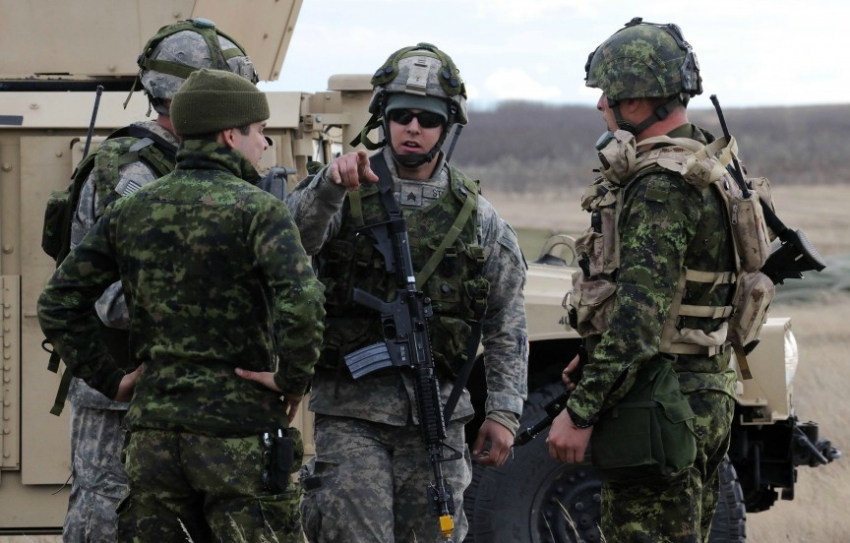
Spetsnaz Alpha, Russia
Elite unit Russian special forces- Alpha Group was founded in the mid-1970s and became famous during the invasion of Afghanistan, during which Alpha fighters stormed the Presidential Palace in Kabul, killing everyone in the building. In 1985, a team was sent to Beirut to try to rescue four Soviet diplomats. According to rumors, when the diplomats were killed, alpha fighters tracked down the relatives of the invaders and returned them to their families, almost piece by piece, to send a message to potential terrorists.Domestically, Alpha was involved in most major anti-terrorist operations, such as the siege of the Nord-Ost theater in 2002 and the Beslan school siege in 2004. Both events demonstrated the rather brutal nature of Russian special forces, as hundreds of hostages died during the operation. More information about the Alpha group: 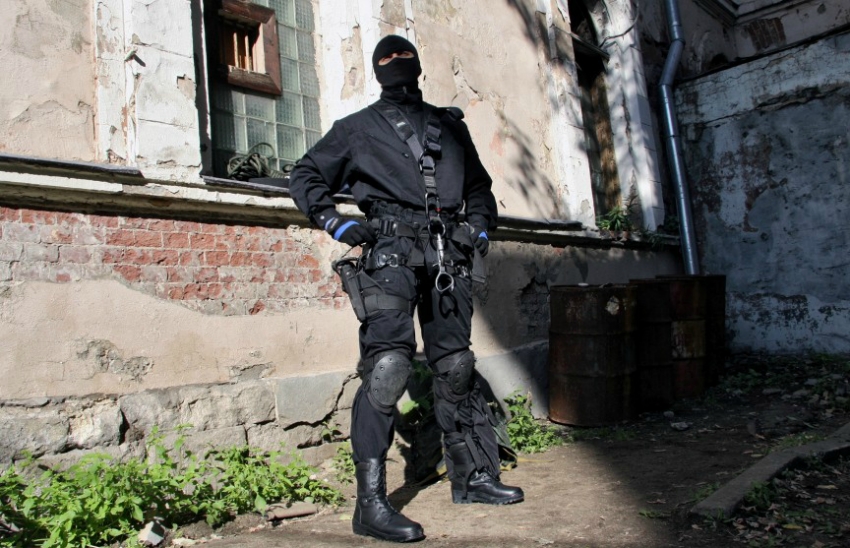
Shayetet 13, Israel
Another Israeli special forces group, Shayetet 13, is linked to the Israeli navy. Created in 1948, the force has taken part in all major Israeli military operations, from hostage rescue and counter-terrorism to intelligence gathering and surveillance. The training course takes 20 months and subjects candidates to the most intense psychological and physical tests before specialized training begins.Special forces soldiers learn all types of combat, parachuting, scuba diving and much more. Shayetet 13 is also responsible for seizing weapons heading to the Gaza Strip. Their most known operation took place after the 1972 Olympic Games in Munich, when special forces tracked down and eliminated those responsible for the attack on Israeli athletes. 
Navy SEALs, USA
Navy SEALs are an American special forces group created in 1962. This group has achieved literally mythical status over the years of its existence. Thanks in part to Operation Neptune's Spear, a mission in which commandos went to Abbottabad in May 2011 and killed Osama bin Laden, the leader of al-Qaeda. This is an elite level of physical and mental strength where only the best of the best are selected.Training takes a year, and most applicants cannot even pass the physical qualification test, which includes swimming, push-ups, squats and running. But if you pass these very strict standards, then go to general training. After completing the training, you move on to become a Navy SEAL, and only after that the door to specialized training opens to you. All this ensures that special forces soldiers are physically and mentally strong and capable of carrying out the most difficult operations anywhere in the world. 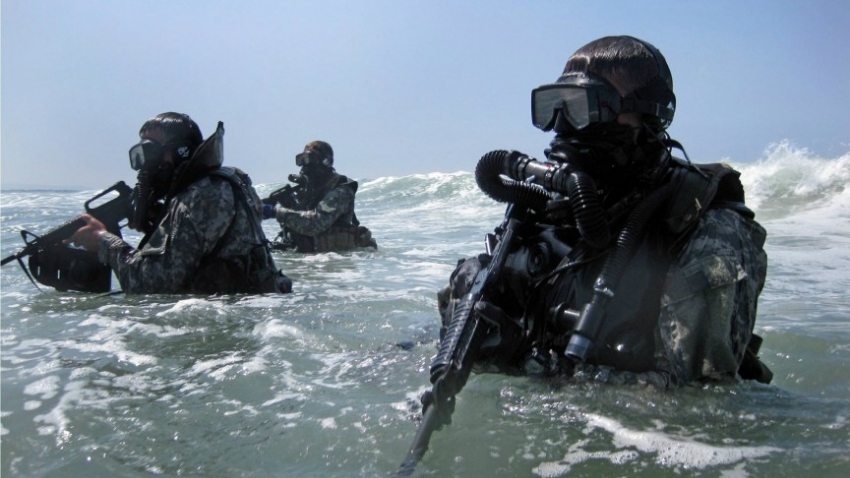
SAS Special Forces, UK
What kind of special forces team could be superior to the legendary Navy SEALs? This is the SAS special forces - the British Special Service, created in 1941 to work behind German and Italian troops and support the Resistance movement against the occupying forces. The physical requirements for candidates are very strict and require great endurance. The test culminates in a 40-mile march with full gear, which must be completed in 20 hours.Candidates must be able to swim two miles in one and a half hours and run four miles in 30 minutes. After that, they are thrown into the jungle to learn survival and gain navigation skills, after which they undergo survival practice. The final test is a 36-hour interrogation session in an attempt to break the candidate's will. And only after this the candidate will be admitted to further training. SAS Special Forces soldiers take security courses with MI5 and MI6, learning intelligence service and counterintelligence operations. British special forces are like a mixture of the Navy SEALs and James Bond rolled into one.
Country: Brazil
Number of people: 400 people. 95% of recruits are eliminated at the training stage.
Habitat
Favelas, densely populated slums in the hills around Rio, founded 300 years ago by freed slaves. Favelas are divided into 950 districts, each of which has its own laws established by local authorities. A stranger, especially a white one, can easily be shot or stabbed here, unless, of course, he came to buy drugs. Streets with a width of one and a half meters exclude access by car. Many windows, doors and some holes on all sides make it difficult to understand where the shots were coming from. The police do not dare show themselves in the favelas; only special forces enter here. Any conflict with local population turns into a close-quarters urban battle using firearms, which, by the way, can easily be bought under the counter from the same police officers.

Weapon
Colt Commando assault rifle. 800 rounds per minute. Light weight and short barrel are ideal for mobile urban combat. BOPE fighters are trained to shoot with both the right and left hands, so that it is more convenient to maneuver in the slums.
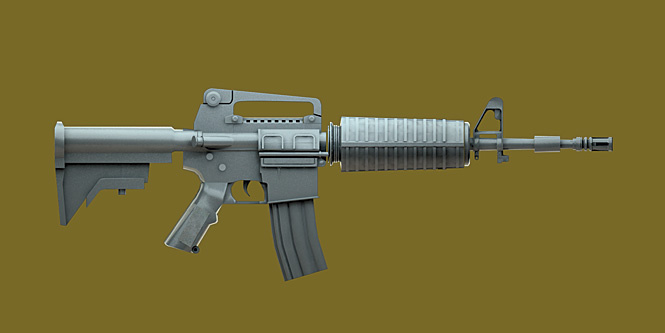
Base
Rebuilt and fortified old casino on a hill high above the city. It rises in the very center of the favelas.
Workout
Running up hills and stairs with 30 kg of armor on your body and 5 kg of weapons. Close combat. Doom shooting on a special training ground simulating slums.

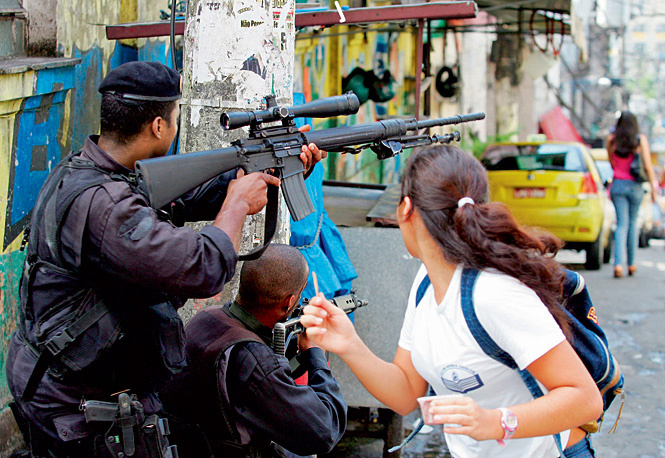
Vehicle
Some favela streets are still wide enough for a caveirao - a completely black armored special forces vehicle, affectionately nicknamed "the big skull" - to drive through them. The only weak point of these armored cars is the wheels. Brazilian special forces joke that they can change tires faster than Formula 1 mechanics. Amnesty International recently spoke out against the use of caveirao. The fact is that special forces often practice “mobile sweeps” - shooting suspicious passers-by in favelas directly from the windows of a truck. Human rights activists consider this poaching.


Country: Colombia
Number of people: 500 people.
Habitat
Jungle. Eternal twilight under a thick canopy of foliage. You can stand a meter away from the enemy and not notice him. Vermin, 100% humidity and lack of roads are not even discussed: the locals have been accustomed to this since childhood. In the impenetrable thickets in the center of the country there are coca plantations that produce 700 tons of cocaine a year. As a result, the powder will settle in the nostrils of residents of the USA and Europe, powdering the noses of half of them along the way. Latin America. Since the mid-80s, the Americans and the British have been trying to block great river at the very source and allocate a lot of money and specialists from their own special forces to train “hunglas” - fighters with Colombian field laboratories where 95% pure cocaine is boiled down. Storming these establishments means not only exchanging 5mm bullets, but also the prospect of losing a leg or two. Few people know that Colombia firmly holds the first place in the world in the number of incidents with anti-personnel mines. Drug lords like to plant a “hunglas” surprise.

Weapon
The good old Colt Commando in the M4 version - the shortest of all with a folding telescopic butt. Just enough to carry it through the jungle. On the other side, the special forces are greeted exactly the same. This is generally the most popular weapon in Latin America.

Base
There are four divisions in the country. Their bases are located at least an hour's drive from big cities, next to the native jungle.
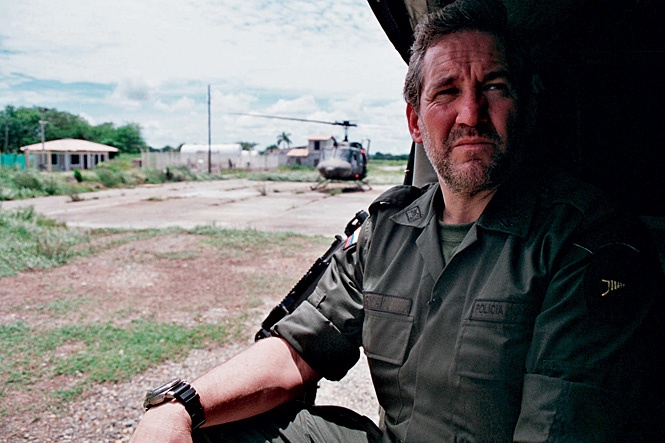
Workout
Forced marches through the thickets in full gear (the weight of armor and weapons is about 20 kg). Shooting at targets hidden among foliage and vines.
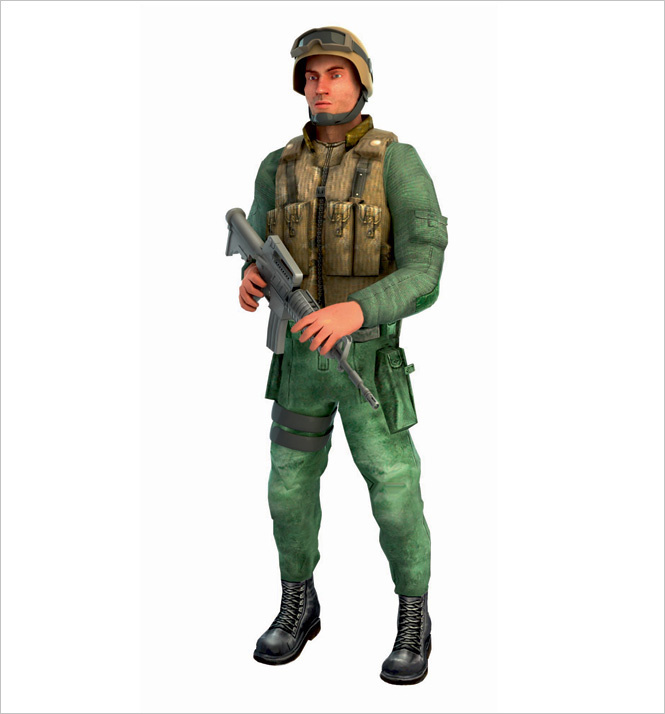
Vehicle
American Black Hawk helicopters. The most luxurious gift from a northern uncle. With the help of this reliable and compact machine, you can look out from above for coca plantations and throw “hunglas” to any point in their mountainous, impassable country. You can also shoot from above if the battle on the ground takes a particularly unpleasant turn. The most amazing people in Colombian special forces they are helicopter pilots. They seem to be able to land at ease on the roof of a shabby village hut, smiling and masterfully bickering with someone they know on air. Before our eyes, one landed on a steep hillside, and the blades turned out to be about twenty centimeters from the protruding stone.
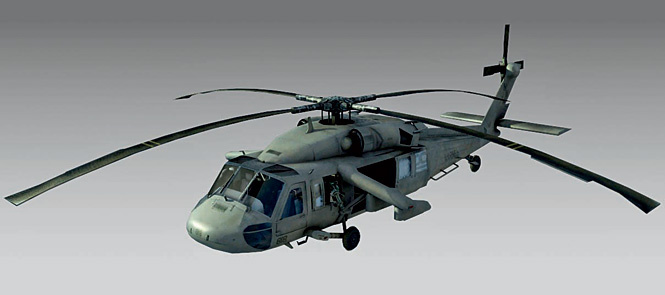
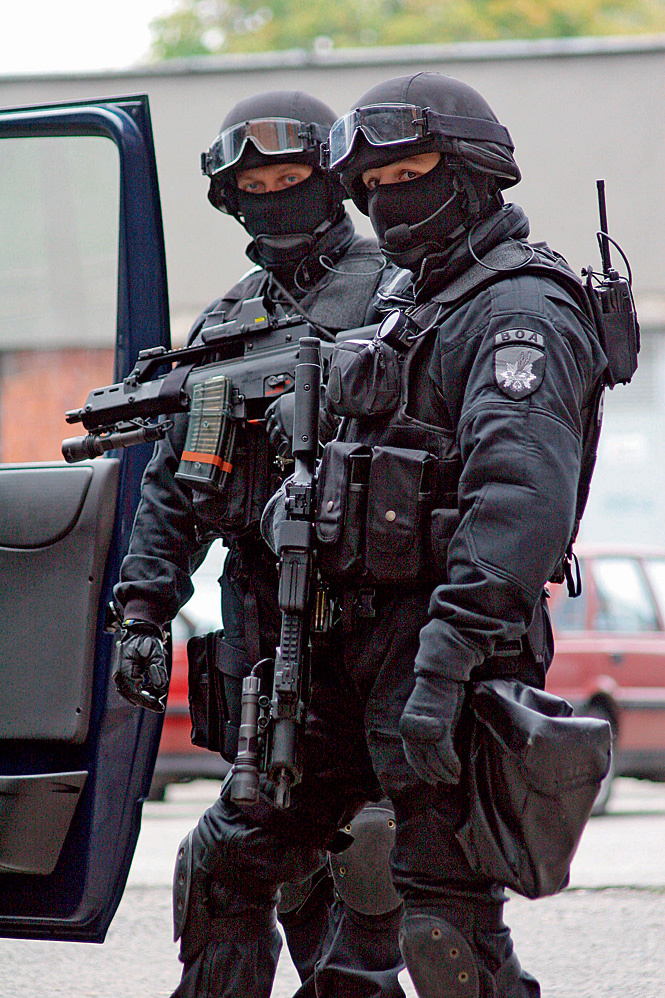
Country: Poland
Number of people: 237 people. The best police officers come here and undergo testing for three years.
Habitat
Densely populated city blocks, built according to Soviet GOST standards. It is in small apartments on the outskirts of Warsaw and other cities that those whom the ZOA hunts live, and hide weapons, prostitutes, heroin, etc. there. All this flocks here before being distributed throughout Europe: Poland, with its seven borders and membership in the European Union, is an ideal transit point. Special operations take place almost every week. Sometimes they are quite extreme, as, for example, in the small town of Magdalenka. Two Russian arms dealers then dug in in a private house, so that forty special forces could not storm them for 12 hours. The “Russian mafia” planted a mine under the door, grenades were dropped on the heads of stormtroopers, and fire was continuously fired from the windows. As a result, the criminals were taken dead, having lost two fighters. However, initially the Polish special forces were created with an eye on even larger game. After September 11, the small but proud Eastern European country decided that it, too, was under threat from terrorists. So far, fortunately, these ambitions have not come true.
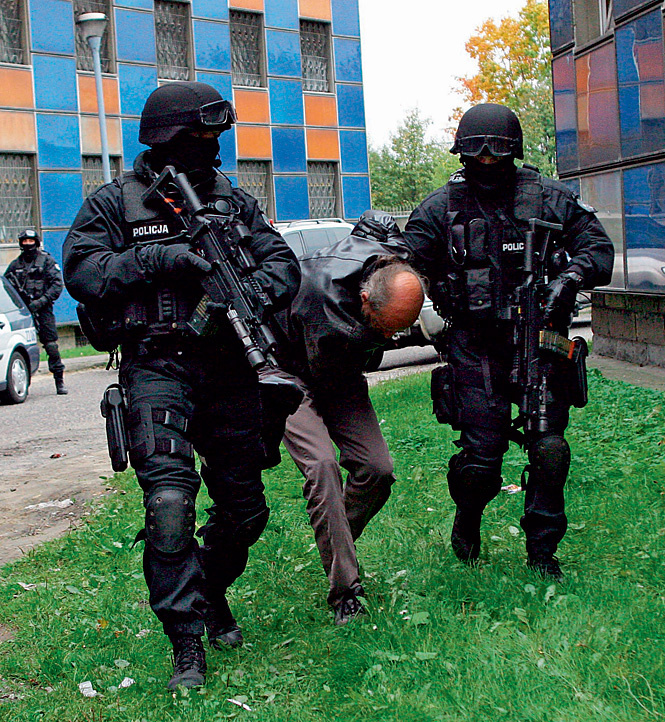
Weapon
MP5 submachine gun. German quality, 9 mm caliber, weighs only 2.5 kg, can be used with a silencer and a combat flashlight - just what you need for quiet urban sweeps. The main disadvantage is the price. Still, you have to pay for the opportunity to snatch from a holster the same thing as the British SAS. By the way, the holster of the Polish special forces, which in addition to weapons also contains a walkie-talkie and smoke bombs, is fastened high on the chest. On the side of the thigh there is an additional holster with a Glock GmbH pistol. The uniform also includes a RoboCop Kevlar helmet, knee pads and body armor - all in non-marking black.

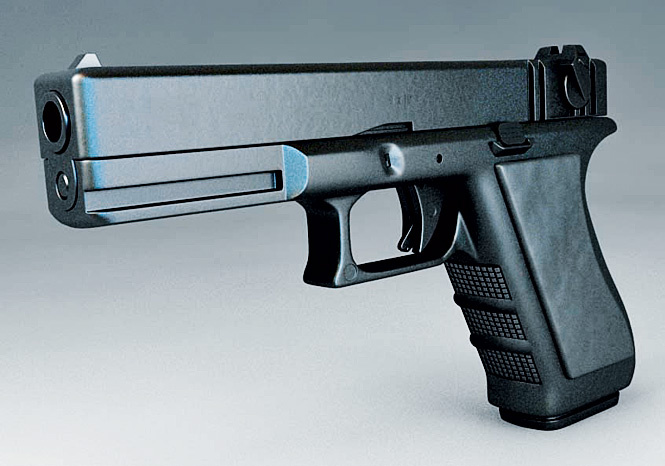
Workout
Carrying out operations in high-rise buildings requires mastery of close combat techniques, rappelling from rooftops, and the art of breaking windows with your feet. The Polish special forces are constantly mastering all this in specially built “death houses”. Since most operations, according to the old KGB tradition, are carried out between three o'clock in the morning and six in the morning, they also train in pitch darkness, using night vision devices.


Country: Mexico
Number of people: 87 people.
Habitat
Mexico City, the largest metropolis on Earth. Here South America meets with Severnaya and does his most unpresentable affairs. In a crowd of 25 million people, it's pretty easy. Nevertheless, the local police do not give up and tirelessly search for criminals in order to engage in a shootout with them - almost every day one of the law enforcement officers dies in the line of duty. The special forces also work in the Stakhanov regime - two or even three trips a week. However, not all of them end in an assault. In many areas, the power is held by cocaine cartels, which place special people at the entrance to the intricacy of streets, so they know about the visit of GOPES in advance, and they prefer to leave. Some, however, take the fight. They have enough weapons and arrogance to meet stormtroopers with a barrage of fire (even rocket launchers!), and then what happens is reminiscent of real war. Thanks to the investments of our northern neighbor, a lot of money and very serious people are circulating here. If someone decided to intimidate someone with the help of special forces, then they need to work it out for real.
Special forces have become an integral attribute of any modern army and the police. The most difficult and difficult tasks fall on the shoulders of special forces. non-standard tasks for the release of hostages, the protection of VIPs, the destruction of special dangerous terrorists and special operations abroad. The first prototypes of special forces appeared during the Second World War, it was the German Brandenburg division. Now there is a correspondence competition between countries, who has the best special forces, where main role What matters here is not the equipment, but the training of people ready to complete any task in the most extreme conditions. Meet ten best squads special purpose of the world.
10. Alpha (Russia)
The Russian special unit Alpha was created in 1973 under the KGB of the USSR. It became known about it after the storming of the presidential palace in Kabul, destroying almost all the people in the building. In 1985, 4 Soviet diplomats were kidnapped in Beirut, one of whom was immediately killed. The release of the hostages was undertaken by Alpha, who found the relatives of the organizers of the kidnapping and eliminated them, sending such a unique message to the terrorists. Lately are mainly used for anti-terrorism (the school in Beslan and the Terrorist Act on Dubrovka, better known as Nord-Ost) and special operations within the country, which are almost always accompanied by numerous casualties. By the way, this is one of the few special forces operating on the principle of “destroy everyone” and not “save them alive at any cost.”
9. GIGN (France)
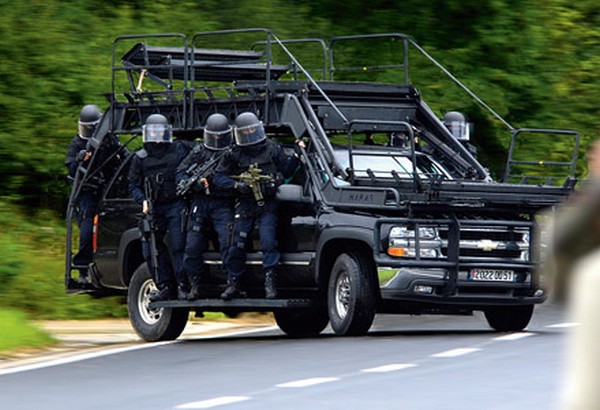
The French special forces unit GIGN (Groupe d’Intervention de la Gendarmerie Nationale) was created after a resonant terrorist attack 1972 in Munich, during the Olympic Games, when several dozen hostages died in the Olympic village. Plus, the year before, there was a prison riot in France with numerous casualties. GIGN specializes in anti-terrorist operations and hostage rescue. The most famous operations of French special forces were the rescue of 30 child hostages in Djibouti in 1976, the arrest of war criminals in Bosnia, special operations against Somali pirates and, of course, the rescue of passengers on Air France flight AF8969 in Marseille in 1994. The number of GIGN is about 400 people.
8. SSG (Pakistan)

In 1956, the leadership of the Pakistani army created its own special operations unit SSG (Special Services Group), taking as a basis the structure of the British SAS and the American Green Berets. Only one in four candidates become SSG fighters, who undergo a nine-month training course that includes hand-to-hand combat and survival in extreme conditions. SSG is ready to complete any assigned tasks in the mountains, jungle, desert and underwater. During the Cold War, SSG soldiers were trained by American instructors and operated alongside US Special Forces. In the 80s, Pakistani special forces fighters acted together with the Mujahideen in Afghanistan against Soviet army. Then, according to unconfirmed reports, they actively operated in territories disputed with India. Recently, the SSG has been mainly involved in anti-terrorism operations in Pakistan; in 2009, they carried out an operation to free hostages at the police academy and army headquarters.
7. Sayeret Matkal (Israel)
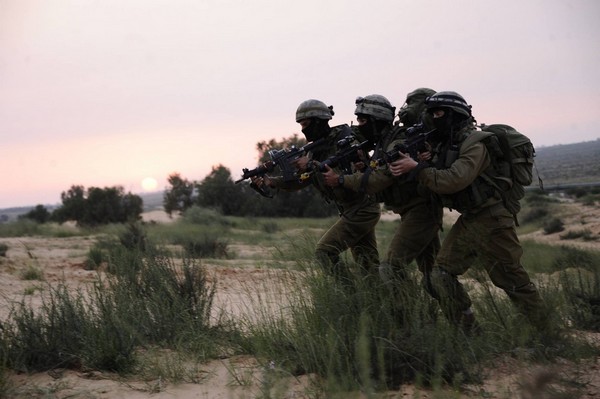
The Israeli special forces Sayeret Matkal was created under General Staff in 1957, where only people with good physical fitness And high level intelligence. Candidates undergo an eighteen-month training course that includes infantry training, paratrooper training, counter-terrorism operations and intelligence training. Since the 60s, Israeli special forces have taken part in several dozen special operations in different parts of the world. The most famous operation carried out by the Sayeret Matkal fighters is “Yonatan”, also known as “Entebbe”. In 1976, Palestinian militants hijack a passenger plane and land it near the Ugandan capital of Kampala, taking 83 people with Israeli passports hostage. 100 people took part in the assault on the airport, but a strike force of 29 people, entirely consisting of Sayeret Matkal commandos, destroyed most terrorists.
6. Delta Force (USA)
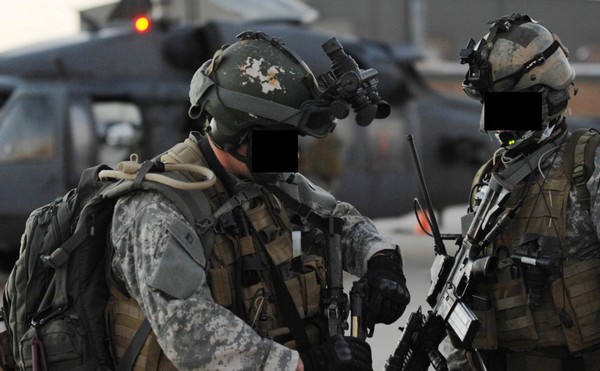
The 1st Special Forces Operational Detachment-Delta unit (translated into Russian as the 1st Special Purpose Operational Detachment "Delta"), the better known Delta Force, was created in 1977 to conduct anti-terrorism and secret operations, reconnaissance and hostage rescue. The British SAS were taken as a role model; moreover, the man who stood at the origins of the creation of Delta Force worked closely with representatives of the British special forces for a long time. It typically recruits former Green Berets and Rangers, of whom only 1 in 10 pass the tests.
5. GSG 9 (Germany)

The German unit GSG 9, specializing in anti-terrorism and special operations under the Ministry of the Interior, was created in 1973, exactly one year after the Munich tragedy, when 11 Israeli athletes were terrorists during the Olympic Games. I use GSG 9 to free hostages, destroy terrorists, neutralize extortionists, protect important people and conduct sniper operations. Over the entire period of its existence, more than 1,500 successful operations were carried out.
4. JTF2 (Canada)
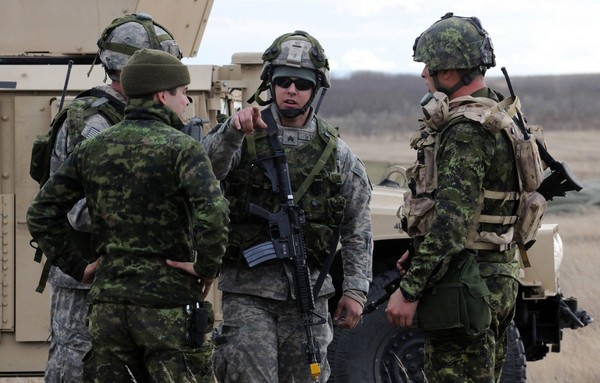
The Canadian special forces JTF2 (Joint Task Force 2) under the Ministry of Defense was created in 1993, the number of which was increased after the terrorist attacks of September 11, 2001. The main task of this unit is to carry out anti-terrorist and special operation, and also involve in the protection of especially important persons. JTF2 was deployed to protect heads of state during the 2010 Winter Olympics, rescue hostages in Iraq, and hunt down Serbian snipers in Bosnia. Also, the Canadians, together with the American Navy SEAL, carried out special operations in Afghanistan, and which were so secret that the Prime Minister of Canada did not know for several years that JTF2 was actively fighting in Afghanistan.
3. EKO Cobra (Austria)
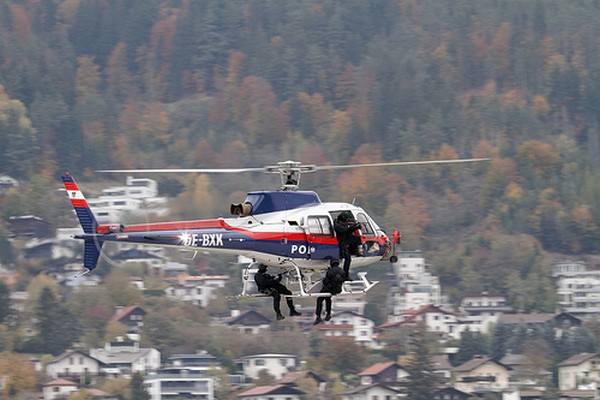
The Austrian anti-terrorist unit EKO Cobra was created in 1978 under the Ministry of the Interior. In Austria, the idea of creating a special police force arose in 1972 after the terrorist attack in Munich in 1972 during the Olympics, when 11 Israeli athletes were killed. EKO Cobra is primarily involved in anti-terrorism operations. All fighters in the unit undergo mandatory courses in shooting, hand-to-hand combat, combat tactics, explosives and scuba diving. EKO Cobra is the only special forces unit in the world that neutralized terrorists in a flying plane before it landed at the airfield. This happened in 1996 when criminals demanded a change of course civil aircraft, which carried four EKO Cobra employees and were neutralized within a few minutes.
2. Navy SEAL (USA)
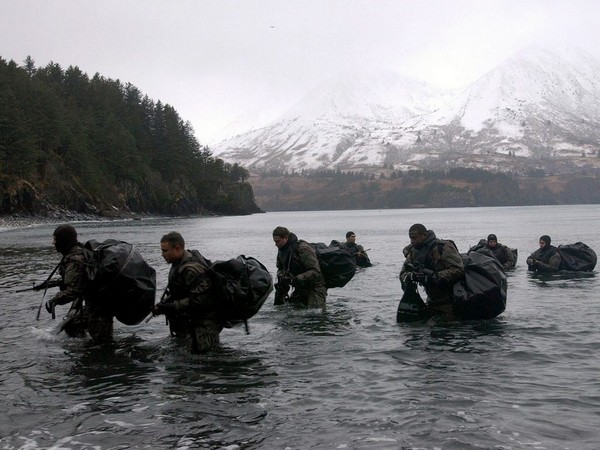
The US Navy SEAL team, also known as the Navy SEALs, created in 1962, has become a true legend after its daring operations in Iraq and Afghanistan over the past few years. Particularly resonant was Operation Neptune Spear in 2011, during which the number one terrorist, Osama bin Laden, was killed in a villa in Pakistan. All recruits of the unit undergo a training course during the year, where the majority are eliminated already at the first stage during general physical training, where the emphasis is on push-ups, squats, running and swimming. After which, undergoing highly specialized training such as explosives, reconnaissance, etc.
1. SAS (UK)
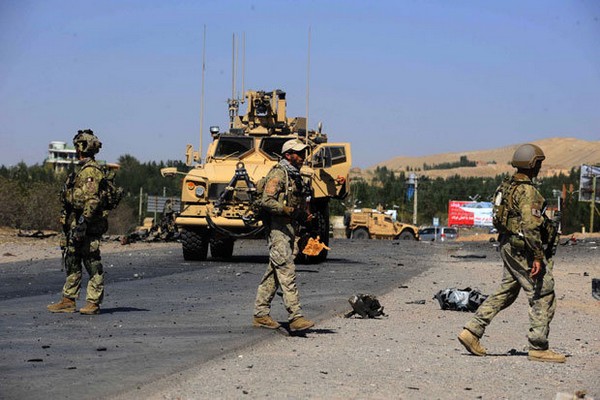
The best special forces unit in the world is considered to be the British SAS (Special Air Service, SAS), created back in 1941, which became a role model for the creation of similar units in other countries. Initially, the units were created to act in the rear of Italian and German troops in North Africa, eventually transforming into an anti-terrorist squad to conduct operations both inside and outside the country. All SAS candidates, who are mostly paratroopers, must complete a 40-mile forced march at full gear in 20 hours, followed by a 2-mile swim in 1.5 hours and a 4-mile run in 30 minutes, and that's just the first part of the test. Further into the jungle, where they must demonstrate survival skills and finally withstand a 36-hour interrogation, where they try to break the will of the recruits. In addition to general military training, SAS soldiers undergo various courses under the guidance of MI5 (security service) and MI6 (foreign intelligence service) instructors. The SAS loudly declared themselves in 1980, carrying out a successful storming of the Iranian embassy in London, freeing the hostages.
Real army power is not when there are tons of (often clueless) soldiers in the country, but when there are a small number of soldiers whose training and track records are frightening. Here are seven of them for you.
Navy SEAL (" seals", USA). One of the most cool special forces world armaholic.com
“Black Stork”, Pakistan
In-country special forces group. The bird's name was earned thanks to its unusual headdresses. Preparation:
- forced march - 58 km. Travel time - 12 hours;
- jogging in full gear - 8 km in 50 minutes.
One of the brightest achievements: in October 2009, an office building held by Afghan terrorists from the Taliban group was stormed. The specialists from “Black Stork” completed the task: they neutralized the “bad guys” and saved 39 hostages.
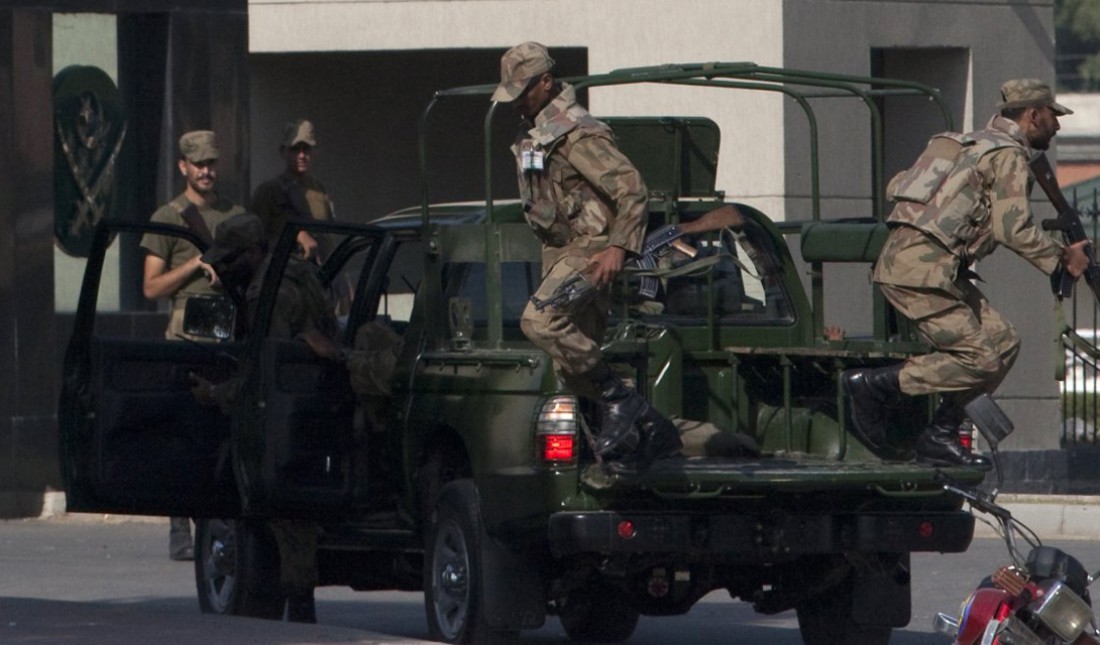
telegraph.co.uk
Spanish Navy Special Forces
The detachment was formed back in 1952. They recruited volunteers and called it “a company of mountaineering divers.” Over time, they were so trained that the “company” was transformed into a special forces detachment. Today it is not easy to get into it: the selection is extremely severe. Therefore, 70-80% of recruits are eliminated every year. And sometimes it happens that everything is 100%.

The special forces of the Spanish Navy were once a "company of mountaineering divers" marines.mil
GIGN, France
French Gendarmerie special forces, intervention group GIGN. Pass special training to free the hostages. Since its formation (1973), 600 people have been saved to date.
The most dramatic rescue operation took place at the Al-Haram mosque in Mecca in 1979. According to the Islamic religion, a non-Muslim cannot set foot on the temple premises. Therefore, three French soldiers quickly accepted the faith and joined the troops Saudi Arabia, and did their job efficiently. Looking for photos with the faces of GIGN members is a lost cause: their publication is prohibited by French law.
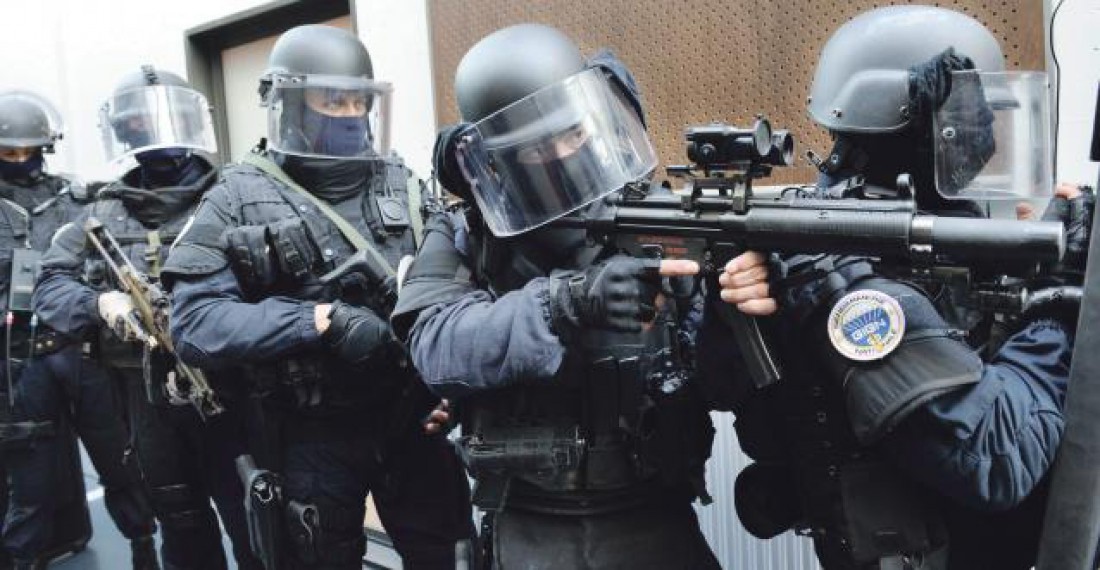
tactical-life.com
Sayeret Matkal, Israel
The main task is to gather information, often taking place deep behind enemy lines. One of successful operations, information about which we managed to obtain:
- 2003, Israeli taxi driver Eliyahu Gurel took three Palestinians to Jerusalem → was kidnapped → he was discovered by specialists from Sayeret Matkal in a 10-meter shaft in an abandoned factory in the suburbs of Ramallah (Palestinian city) → saved the poor guy.











Surveyor. Who is a surveyor? Description of the profession. Profession surveyor Surveyor training
Magellanic clouds: who are they?
Pepper Steak Sauce Creamy Pepper Sauce
How to create a competent portfolio for a designer
If you dreamed that a house burned down - interpretation of the dream according to the dream book